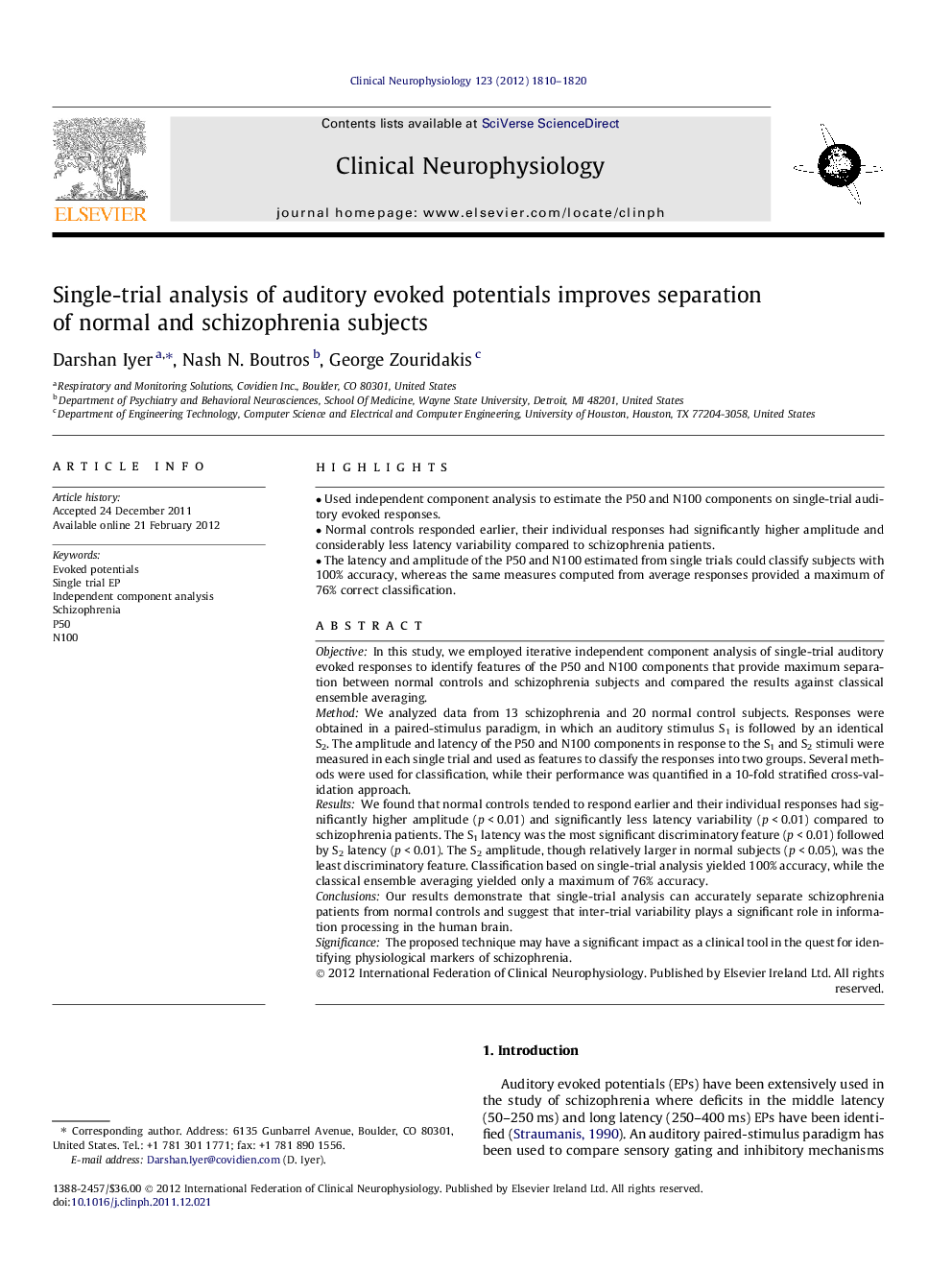| Article ID | Journal | Published Year | Pages | File Type |
|---|---|---|---|---|
| 6008778 | Clinical Neurophysiology | 2012 | 11 Pages |
ObjectiveIn this study, we employed iterative independent component analysis of single-trial auditory evoked responses to identify features of the P50 and N100 components that provide maximum separation between normal controls and schizophrenia subjects and compared the results against classical ensemble averaging.MethodWe analyzed data from 13 schizophrenia and 20 normal control subjects. Responses were obtained in a paired-stimulus paradigm, in which an auditory stimulus S1 is followed by an identical S2. The amplitude and latency of the P50 and N100 components in response to the S1 and S2 stimuli were measured in each single trial and used as features to classify the responses into two groups. Several methods were used for classification, while their performance was quantified in a 10-fold stratified cross-validation approach.ResultsWe found that normal controls tended to respond earlier and their individual responses had significantly higher amplitude (p < 0.01) and significantly less latency variability (p < 0.01) compared to schizophrenia patients. The S1 latency was the most significant discriminatory feature (p < 0.01) followed by S2 latency (p < 0.01). The S2 amplitude, though relatively larger in normal subjects (p < 0.05), was the least discriminatory feature. Classification based on single-trial analysis yielded 100% accuracy, while the classical ensemble averaging yielded only a maximum of 76% accuracy.ConclusionsOur results demonstrate that single-trial analysis can accurately separate schizophrenia patients from normal controls and suggest that inter-trial variability plays a significant role in information processing in the human brain.SignificanceThe proposed technique may have a significant impact as a clinical tool in the quest for identifying physiological markers of schizophrenia.
⺠Used independent component analysis to estimate the P50 and N100 components on single-trial auditory evoked responses. ⺠Normal controls responded earlier, their individual responses had significantly higher amplitude and considerably less latency variability compared to schizophrenia patients. ⺠The latency and amplitude of the P50 and N100 estimated from single trials could classify subjects with 100% accuracy, whereas the same measures computed from average responses provided a maximum of 76% correct classification.
